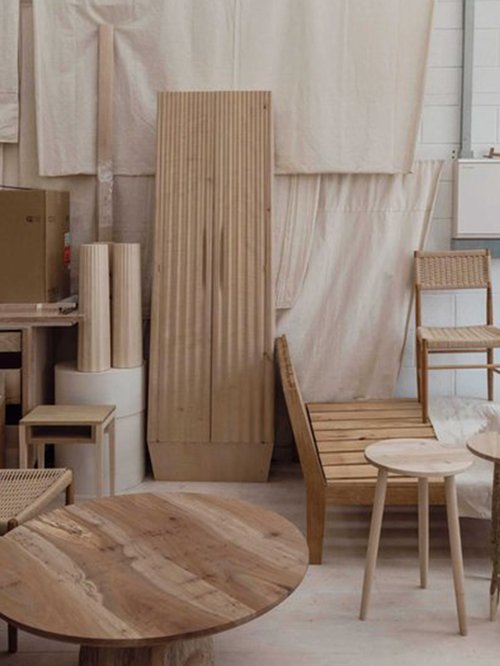
5 min read
Inside the Workshop: Sebastian Cox
On a recent trip to the UK, we had the chance to meet designer, craftsman and environmentalist Sebastian Cox, to learn more about his studio and have a tour of his workshop.
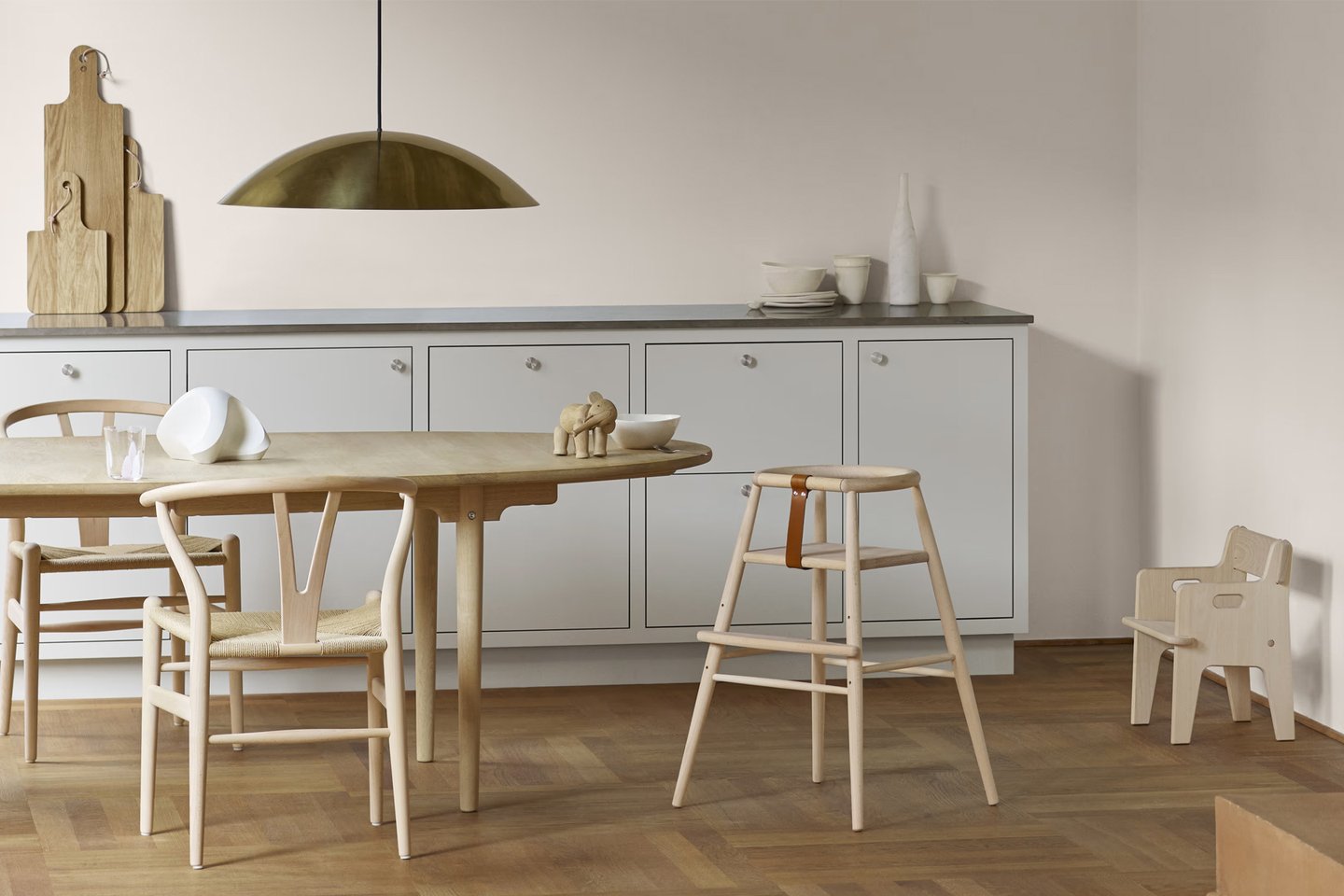
6 min read
Discover how thoughtful design fosters creativity, safety and wellbeing, influencing generations and paving the way for a sustainable future.
In the early 20th century, Maria Montessori revolutionized early childhood education with her child-centered approach, emphasizing the importance of environments tailored to children’s needs. Her innovative designs for child-sized furniture and learning materials fostered independence and creativity, setting a standard for functional, developmentally appropriate design. This legacy continues to influence modern children's furniture and educational tools, integrating principles of play, safety and ergonomics.
Design for children matters because it significantly impacts their physical health, social and emotional development as well as their overall wellbeing. It can also impact their lives as adults; as Charles Eames famously said, “toys and games are the preludes to serious ideas.” Thoughtfully designed furniture, toys and environments can enhance safety, promote healthy growth and encourage learning and creativity. Well-designed spaces and items support children’s cognitive and motor skills development, fostering independence and confidence. Ultimately, design for children shapes their everyday experiences, contributing to their happiness and helping them thrive in a nurturing environment.
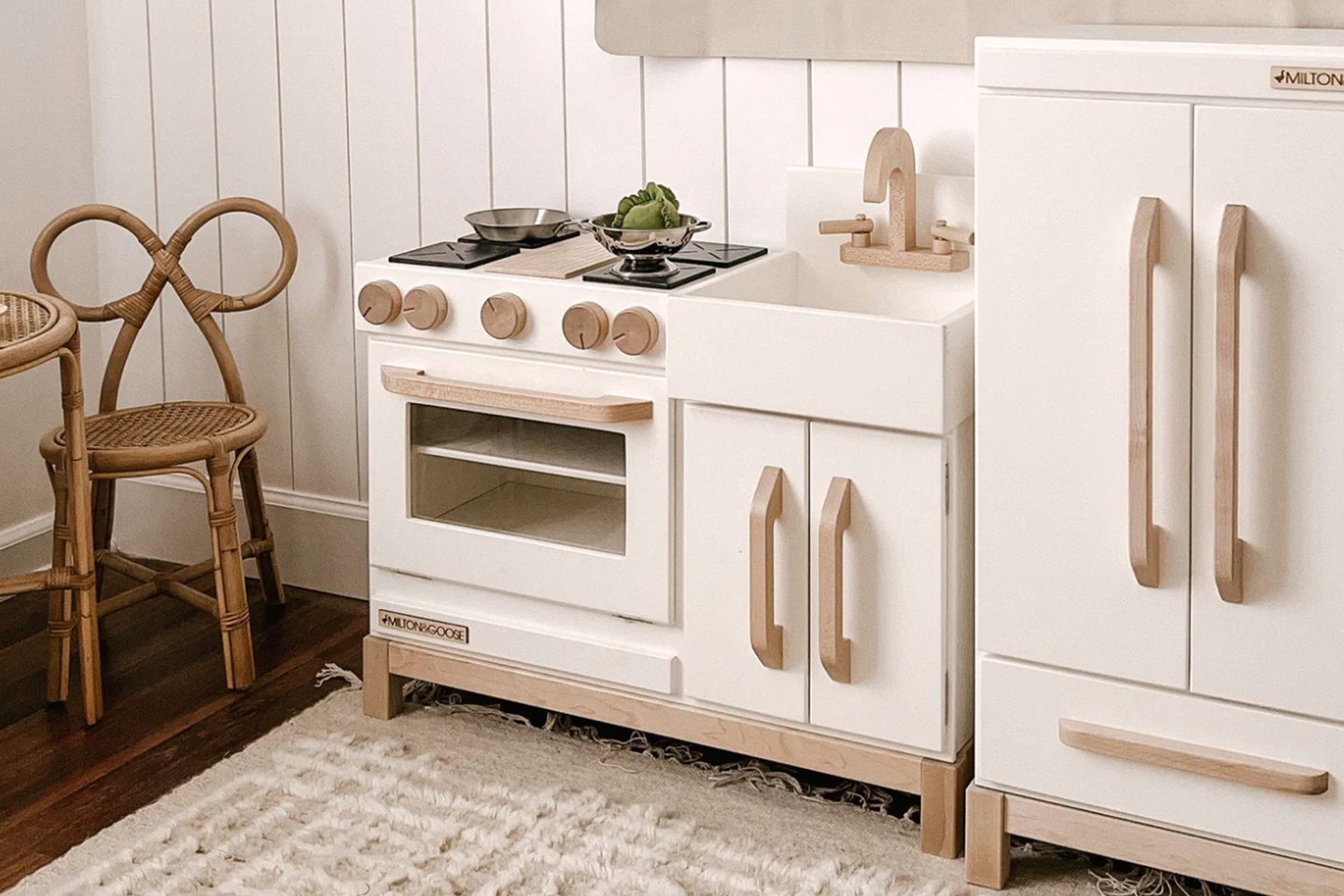
It wasn’t until the late 19th century that the idea of childhood as a distinct and separate stage of life became the norm and there was a focus on addressing children’s specific needs through design. Early designs were well crafted and utilized natural materials such as wood and metal. By the mid-20th century, advancements in plastic manufacturing transformed toy design. Toys became more colorful, lightweight and cheaper to produce.
In the 21st century, children’s design continues to evolve with innovations in technology and a growing emphasis on sustainability. Designs now integrate educational elements, digital interfaces and sustainable materials, addressing contemporary concerns about child development and environmental impact. Modern children’s toys are often designed to be open-ended, allowing children to explore different scenarios and solutions independently. This play promotes cognitive development, problem-solving skills and emotional resilience as children navigate various challenges and role-playing situations. Play helps children develop language skills, creativity and social interaction abilities.
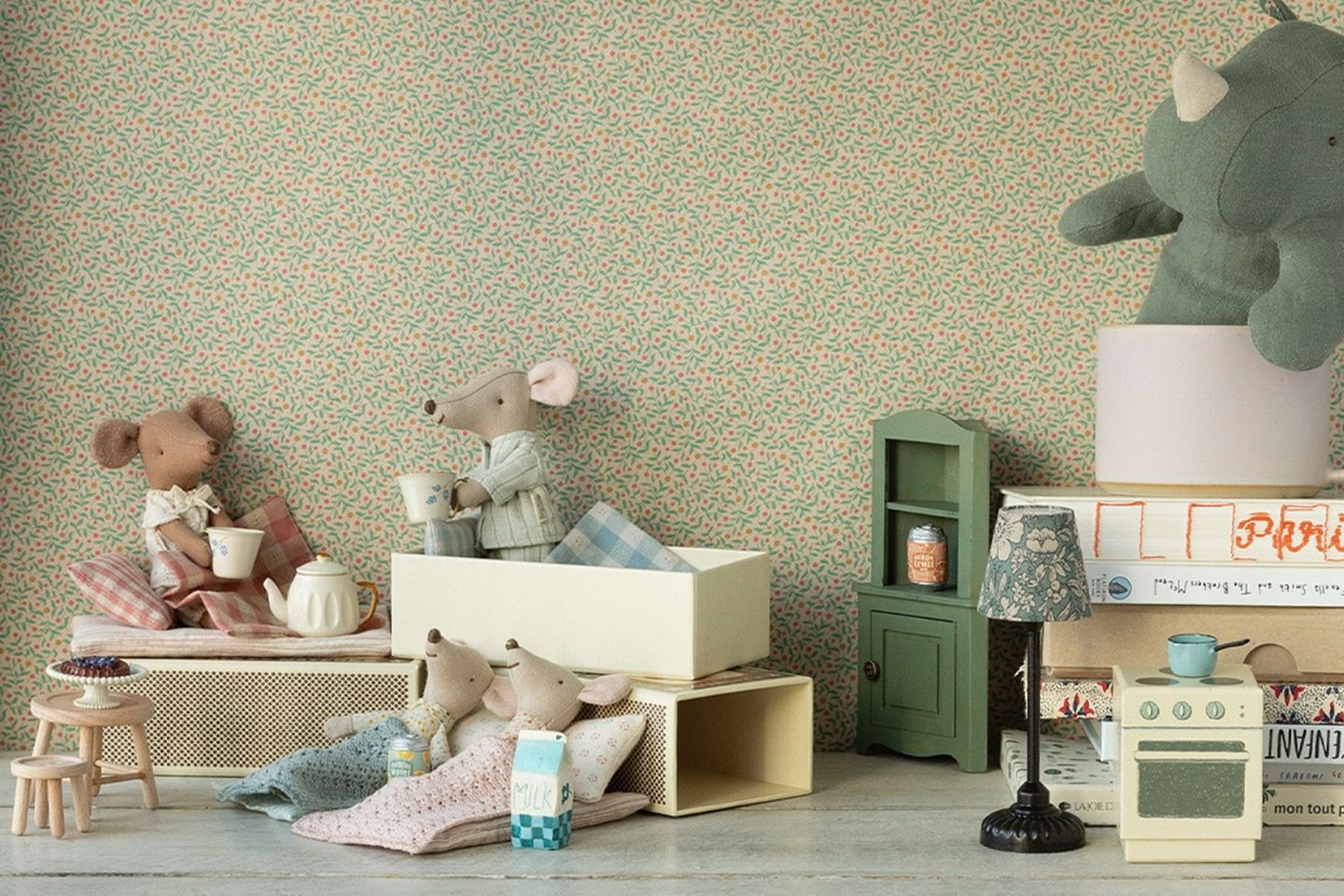
In modern children’s design, the use of healthy materials is increasingly important. Central to this approach is the avoidance of toxic substances such as formaldehyde, phthalates and lead, which can pose significant health risks to children. Instead, opt for natural, untreated woods that are sustainably sourced, ensuring they are free from harmful chemicals and stains that could be ingested or inhaled during play. Organic fabrics like cotton, hemp and wool are favored for their hypoallergenic properties and lack of synthetic dyes or finishes, reducing the risk of skin irritation or respiratory issues. Non-toxic paints and natural finishes further contribute to healthier environments by minimizing the emission of Volatile Organic Compounds (VOCs) into the air, crucial for maintaining indoor air quality in homes and childcare settings.
Innovation in children's design often mirrors broader industry shifts and, at times, has even pioneered new directions. In recent years, sustainability has become a prominent trend in children’s design, reflecting broader concerns about environmental impact and ethical consumption. However, the vast majority of toys are still made from cheap plastic and have a short lifespan. They frequently follow short-term trends and are poorly crafted, meaning they end up as landfill, contributing to environmental pollution. Creativity in healthy and sustainable design for children is still in need of revitalization. While recyclability remains a key aspect, the emphasis must also be on using non-toxic, sustainable materials. Moreover, designing products that evolve with the family and maintain their usefulness over time is essential. This approach not only supports sustainability but also ensures that children’s furniture and toys continue to meet their developmental needs as they grow. By prioritizing these principles, the design industry can foster healthier, more adaptable environments for children to flourish.
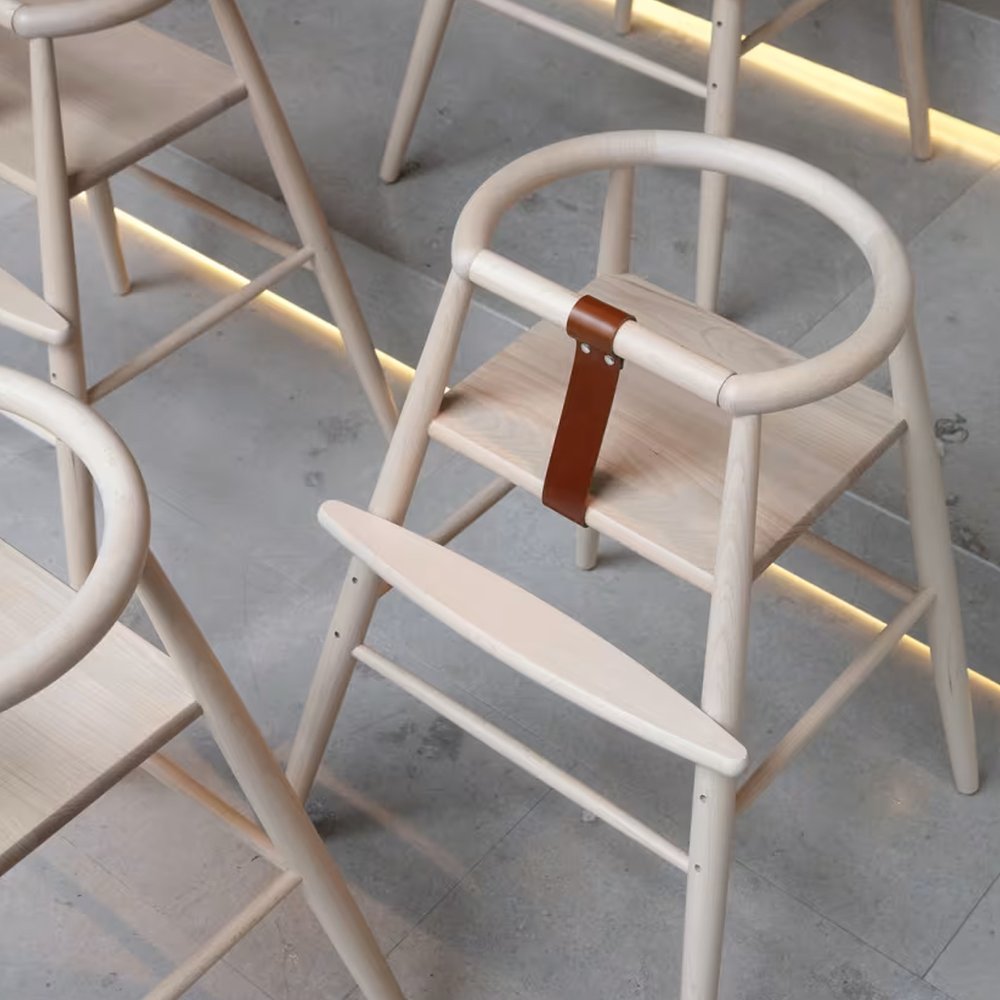
The ND54 High Chair, designed by Nanna Ditzel and first crafted in 1954, is widely considered to be a masterful piece of children’s design. Carl Hansen & Søn, who currently manufacture the chair, ensure that it meets the highest standards of safety and sustainability, using FSC-certified wood, while the engravable name plates make this piece a future heirloom.
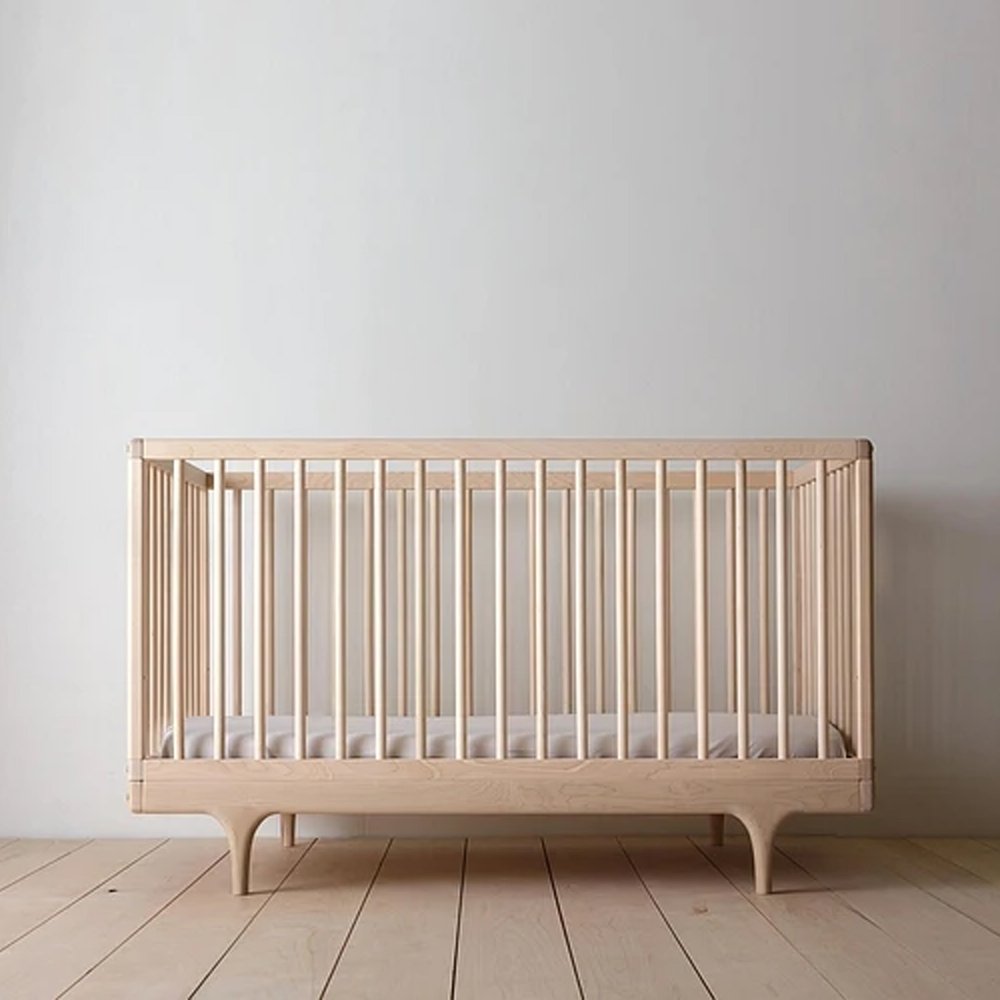
This beautiful crib is designed to be convertible as the child grows, forming a platform-style toddler bed that offers longevity alongside exquisite design. Kalon Studios is committed to craftsmanship and sustainability, using organic plant-based oil and wax finishes that allow the wood to breathe and develop a unique patina with age.

ecoBirdy’s collection of sustainable chairs are ergonomically designed to support children’s natural movements and foster independence. The chairs are crafted with 100 percent-recycled plastic which gives each piece a unique speckled texture that offers tactile sensory stimulation.
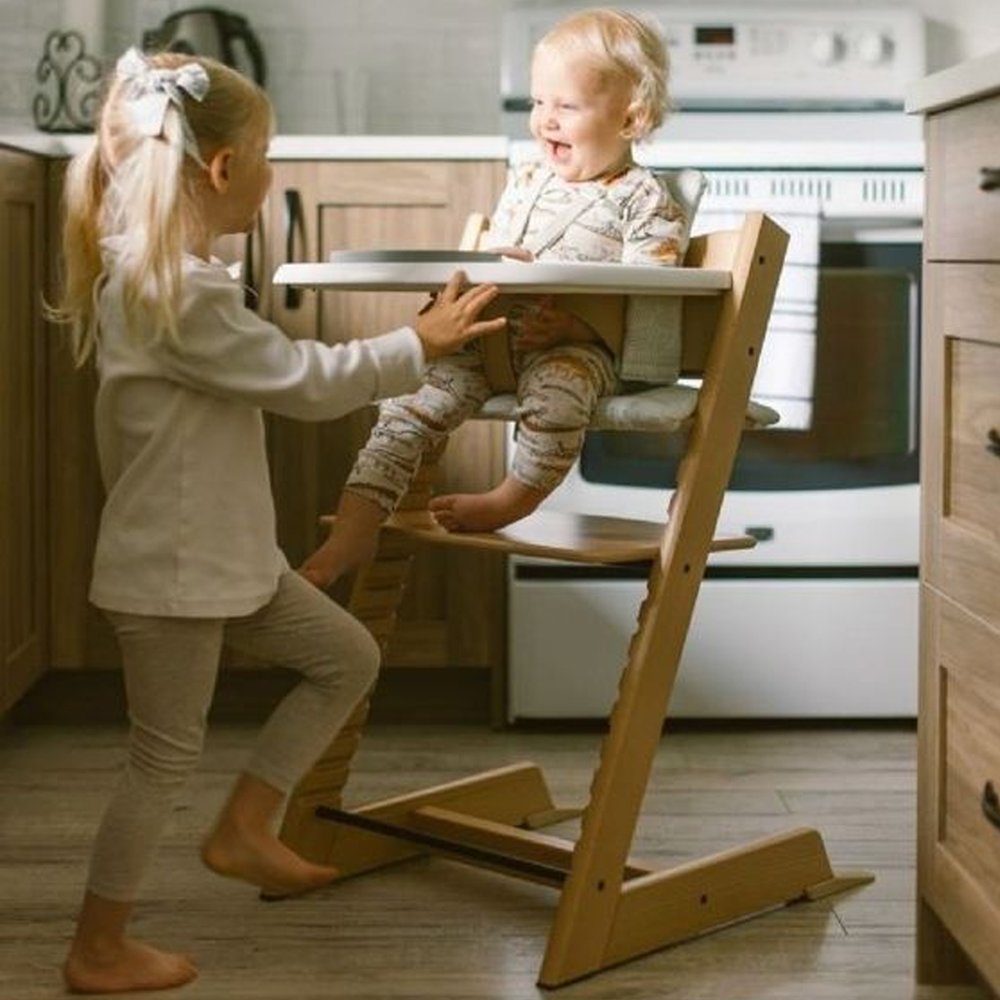
This high chair was designed by Peter Opsvik with adaptability and longevity in mind and generations of children have used it from babies well into their teenage years. The seat and footplates are adjustable, ensuring your child can sit comfortably alongside you. They also offer a free engraving service.
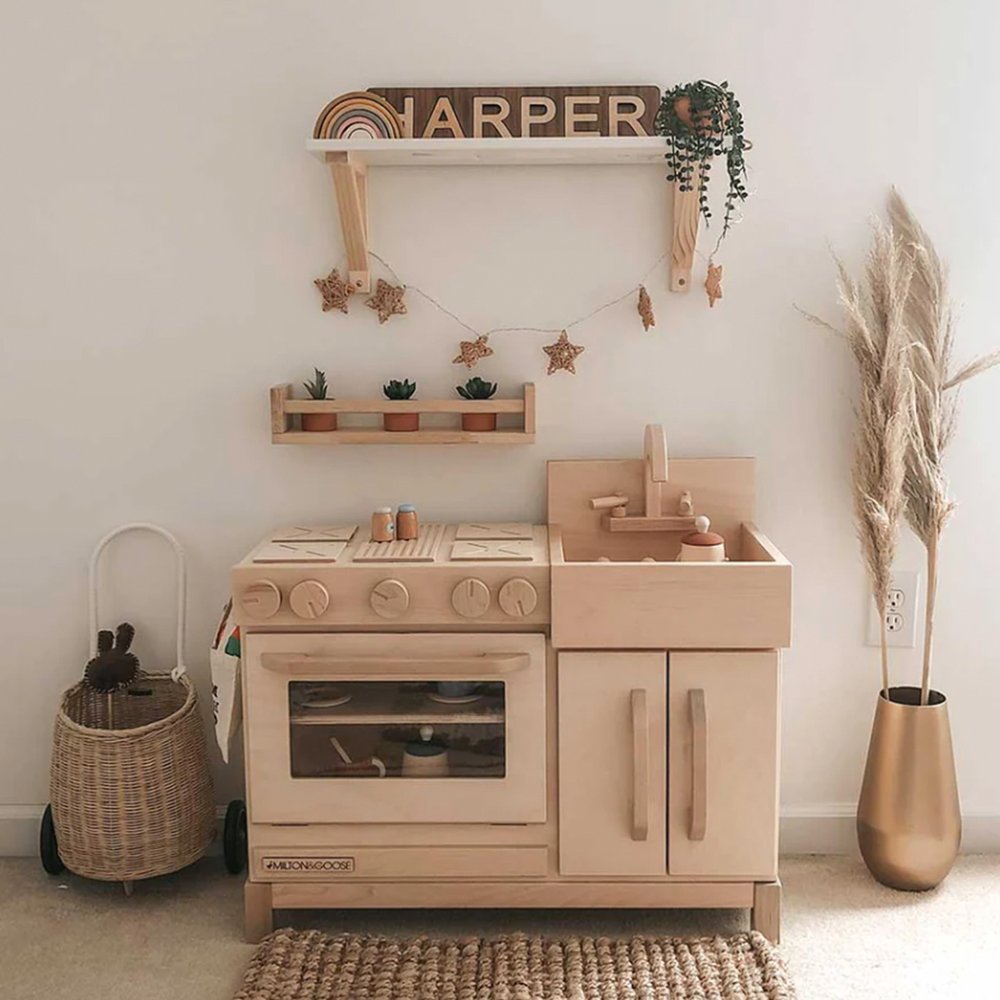
Milton & Goose’s play kitchen is handcrafted in the USA and is of heirloom quality. A timeless design, it comes in a range of beautiful colors. Made from North American maple wood with nontoxic, low-VOC finishes, this stove will support children’s role play and the development of social skills in a healthy way.
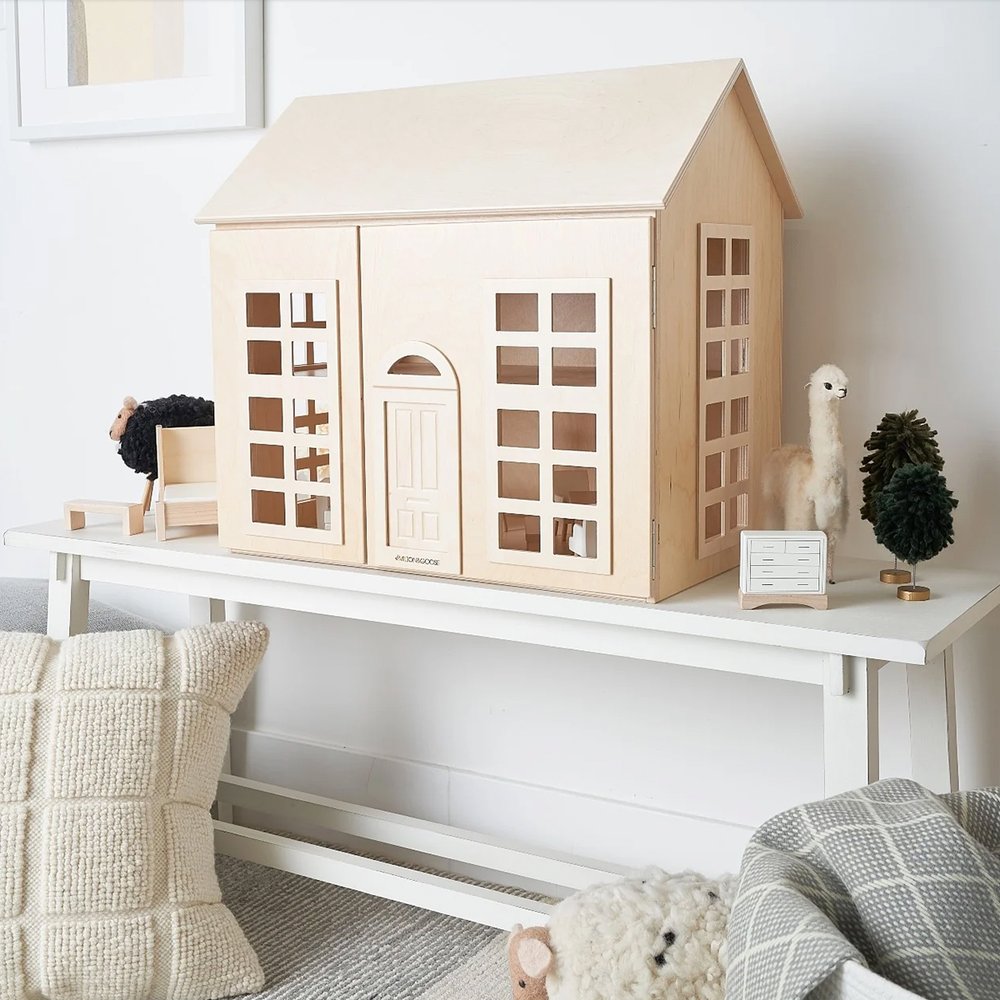
This enchanting dollhouse is the perfect toy to encourage creative play. This classic piece is constructed from sustainable materials and the thoughtful, open design with large windows allows for the child to see inside when it’s closed, imagining the world they have created.
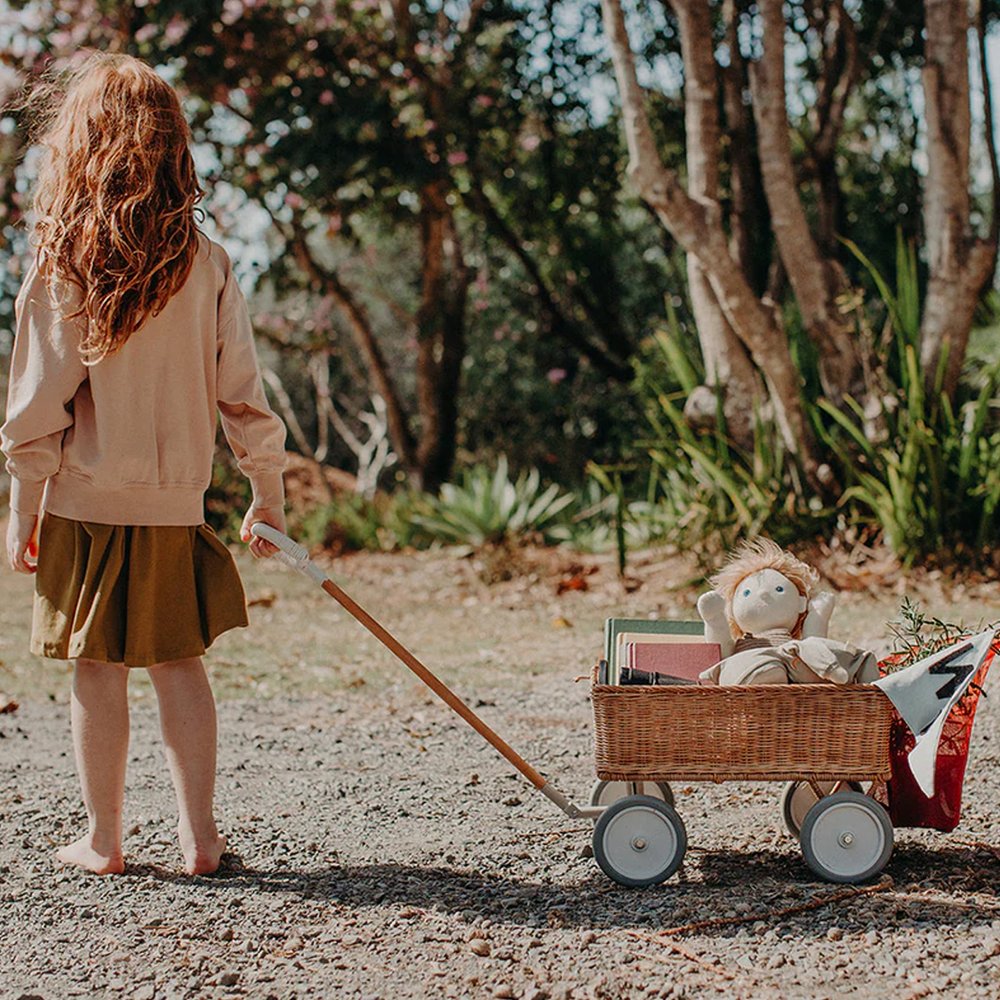
Hand-woven from natural rattan, this tiny, toddler-sized wagon will allow your little ones to take their most prized possessions wherever they go. The elegant design includes wheels made from recycled plastic and a bamboo handle.
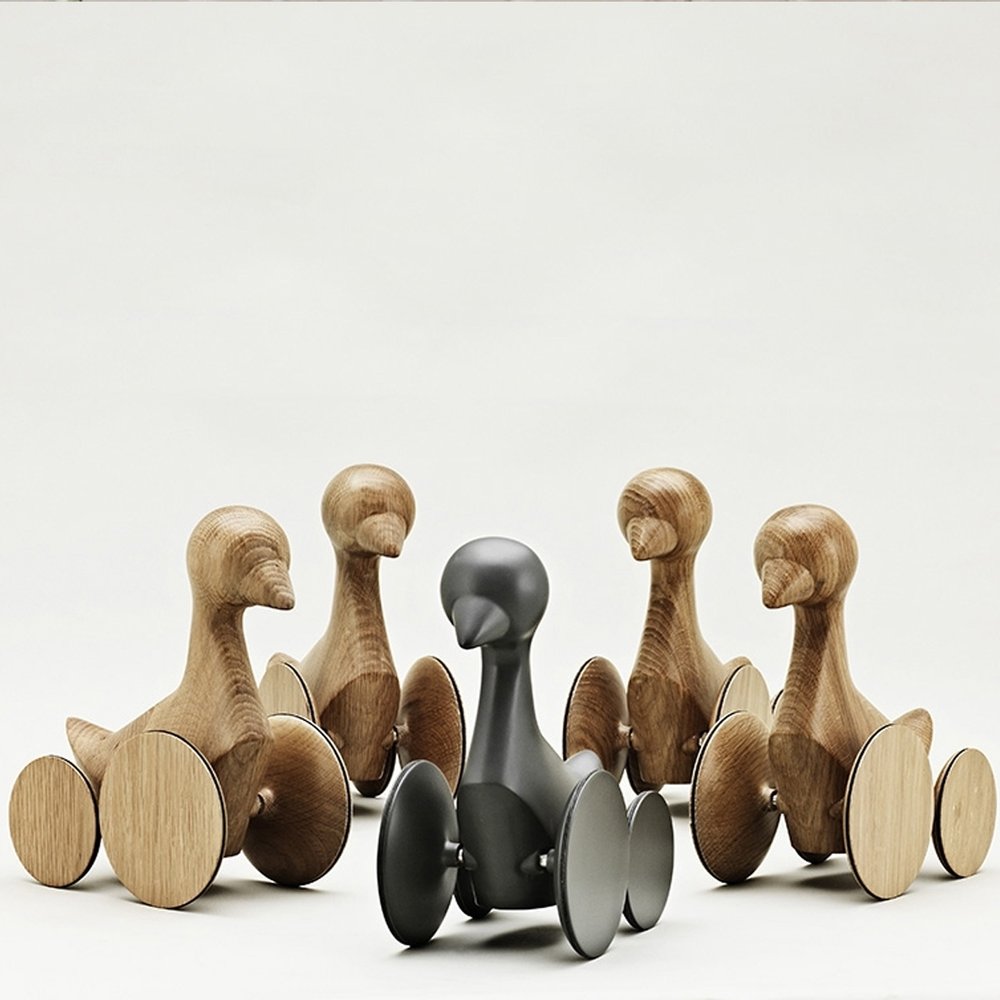
With its timeless, nostalgic design this charming wooden duck is part toy and part decorative piece. Creator Dor Carmon states that, “‘form’ is our language” and that is embodied in ‘Ducky’ which will add a whimsical touch to the nursery.

Designed by Rose and Rose in collaboration with the Royal Danish Academy – Institute of Architecture and Technology, this mobile is crafted with the 17 Sustainable Development Goals in mind. The pendants are made in organic shapes and with colors that subtly reflect the SDG palette, this mobile is a piece of contemplative art.

Steiff has re-released this iconic teddy, newly made from sustainable materials, to commemorate their 120th anniversary. Designed for the ‘Teddies of Tomorrow’ series, his body is sewn from bamboo viscose plush, the paw pads are made from plant-based felt and he’s stuffed with corn fiber. With his copper chest tag, this teddy is a collector’s item of the future.

Maileg’s collection of beautifully detailed cloth mice come in their own matchbox homes. Full of personality, there are many different mice to choose from and a range of accessories to allow your child to personalize them while their imagination crafts their individual stories.
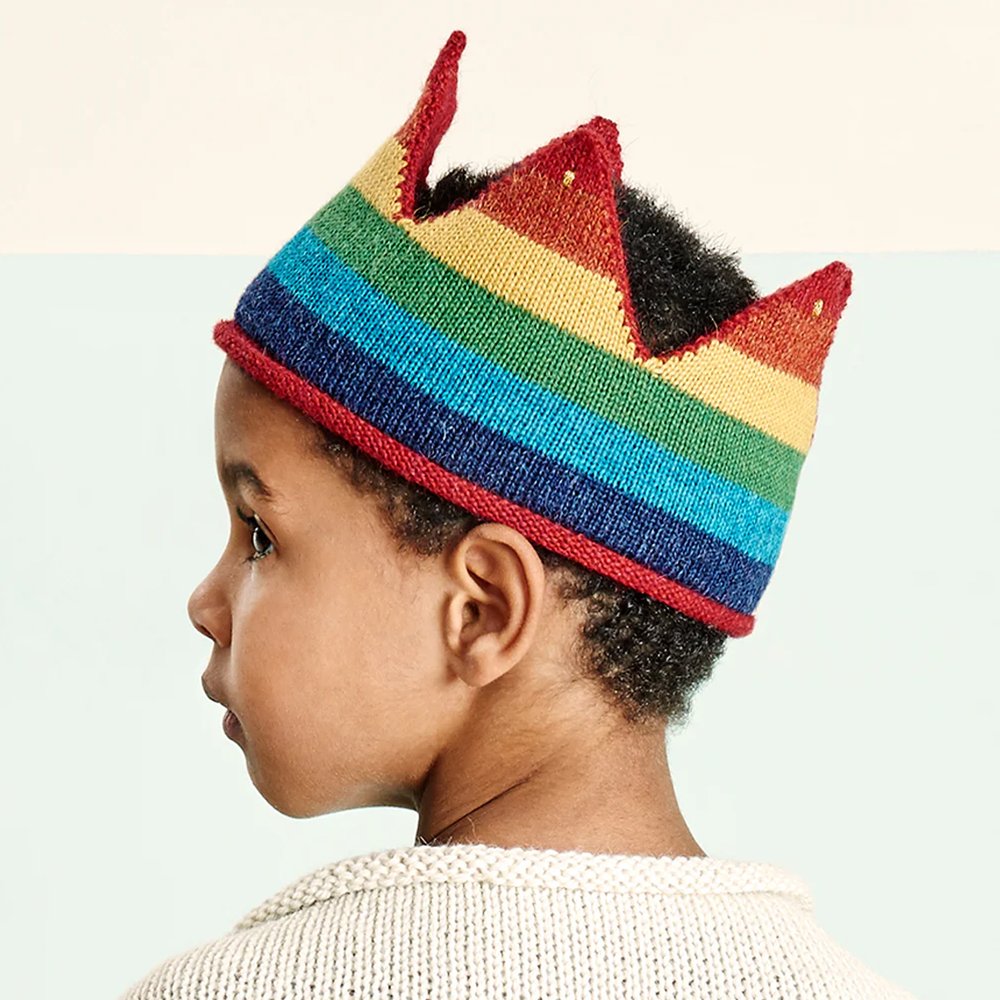
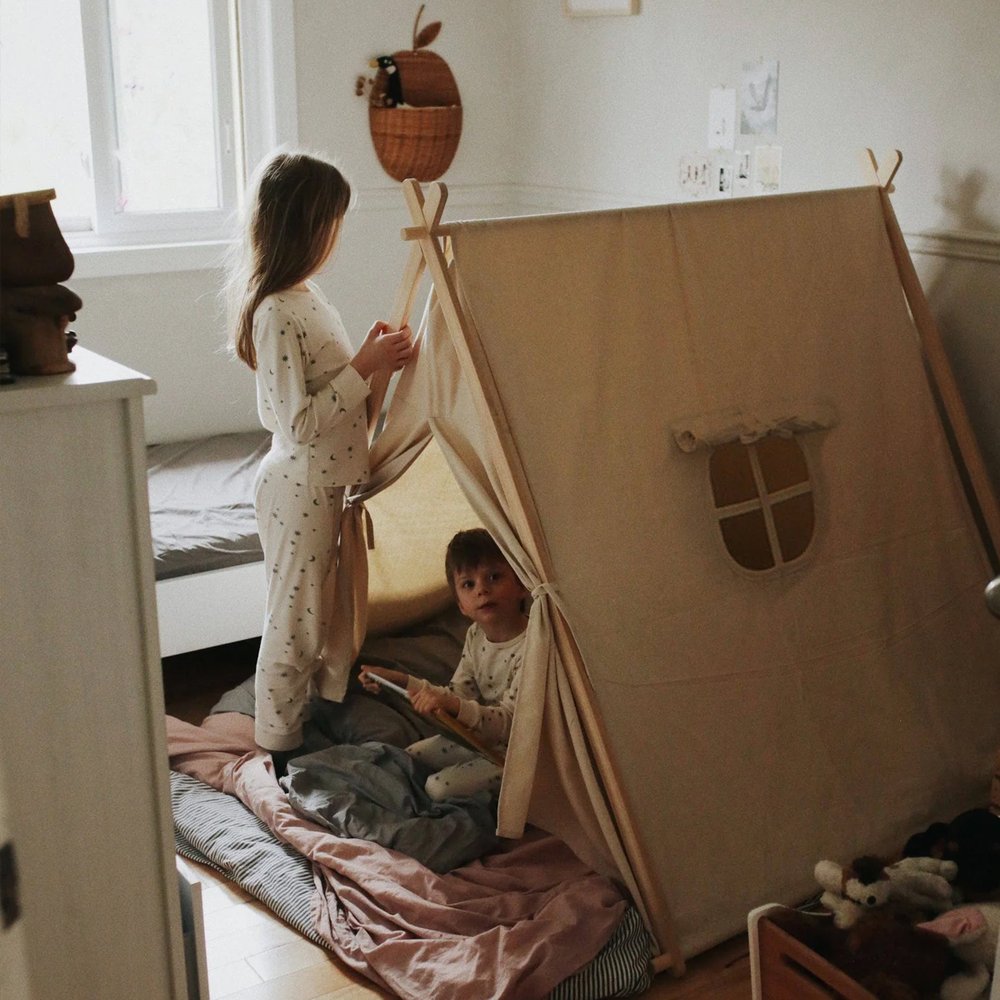
Odin Parker’s lovely play tent crafted from New Zealand pine encourages social and adventurous play, while providing a safe space for your little ones to enjoy. Suitable for indoor and outdoor use, the round window offers a connection to nature and lets in lots of light.
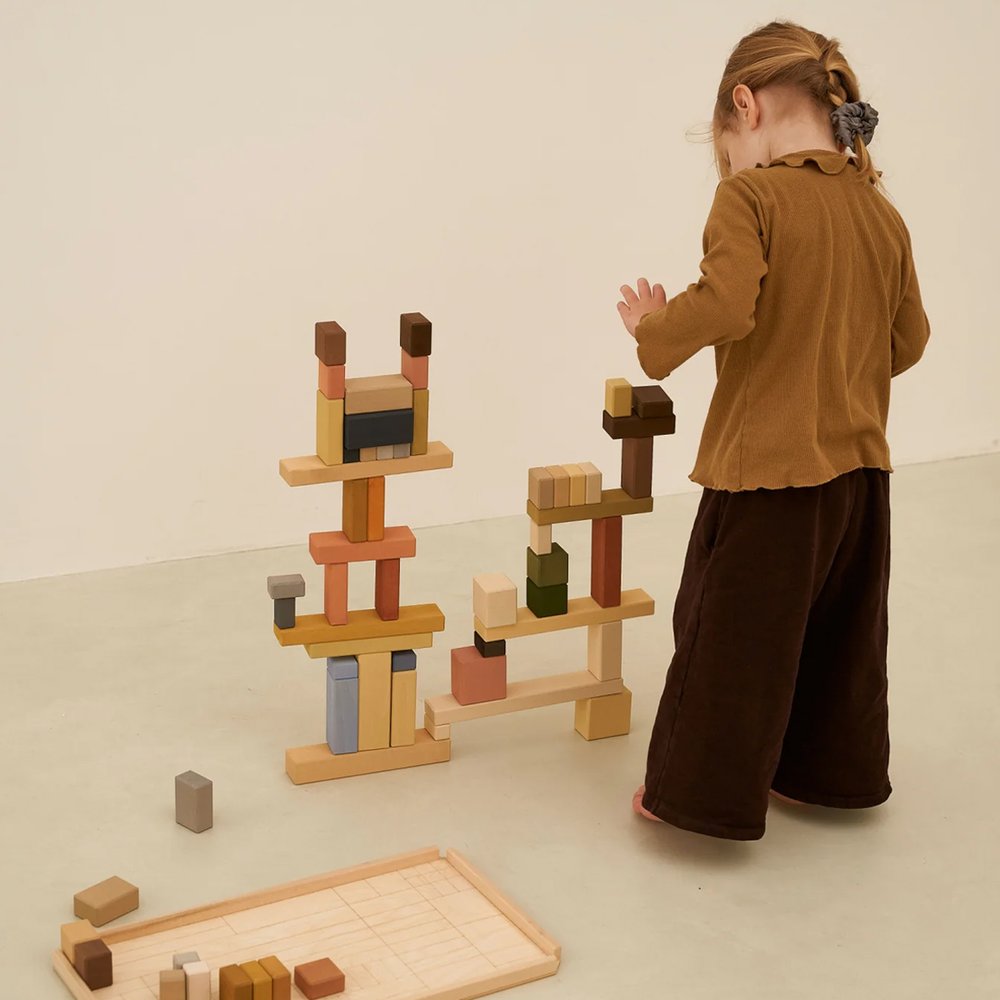
Perfectly designed for open-ended play, these building blocks will allow children’s imagination to run wild. They are handmade and finished with non-toxic water-based paint, making them a healthy addition to the playroom. The sky’s the limit with what your child can create.
Feature Image: Carl Hansen & Søn
Photography: Milton & Goose, Maileg, Kalon Studios, ecoBirdy, Rasmus Stampe Schou, Stokke, Miriam Lena, Olli Ella, Dor Carmon, Flensted Mobiles, Steiff, Oeuf, Odin Parker

5 min read
On a recent trip to the UK, we had the chance to meet designer, craftsman and environmentalist Sebastian Cox, to learn more about his studio and have a tour of his workshop.
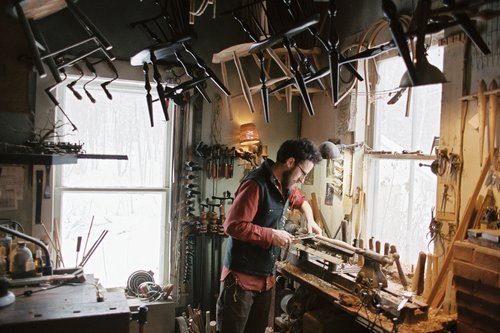
4 min read
WLLW speaks with Vermont's Sawyer Made on blending traditional woodworking with craftsmanship in Windsor chairmaking.